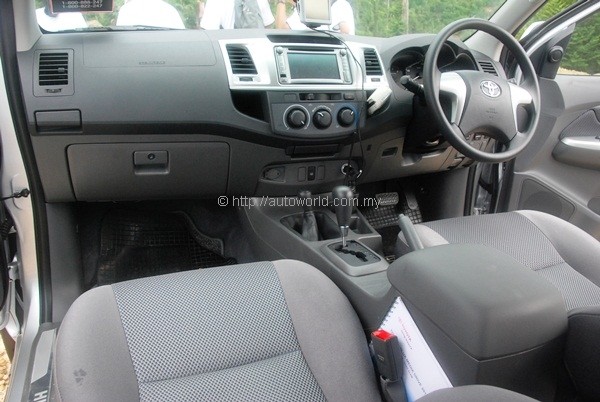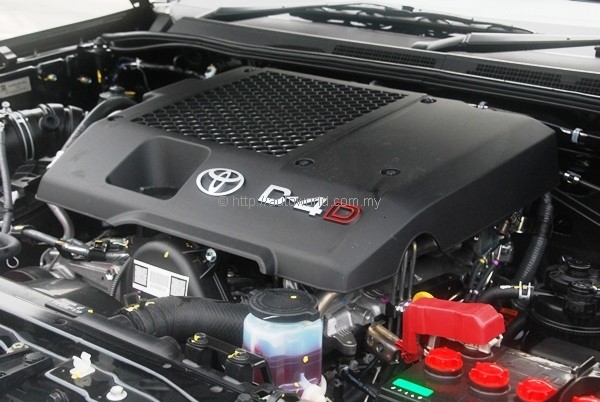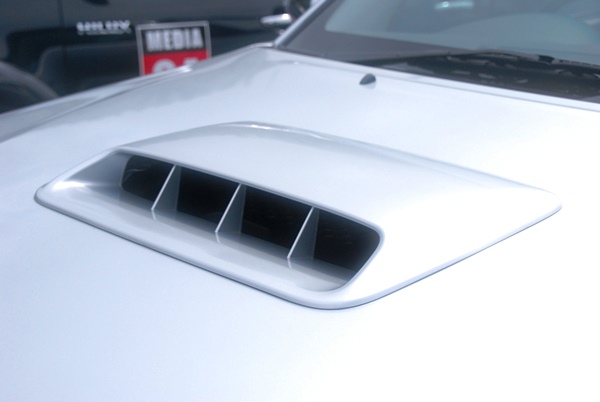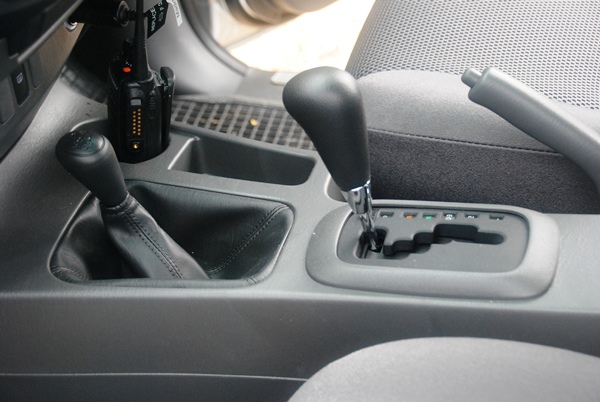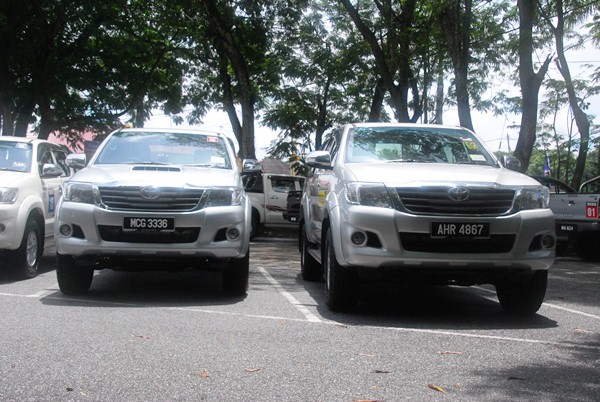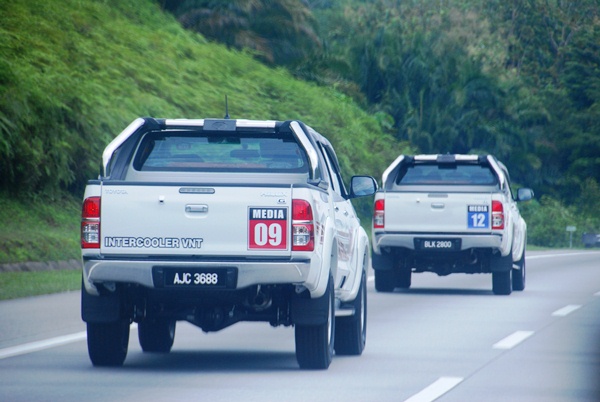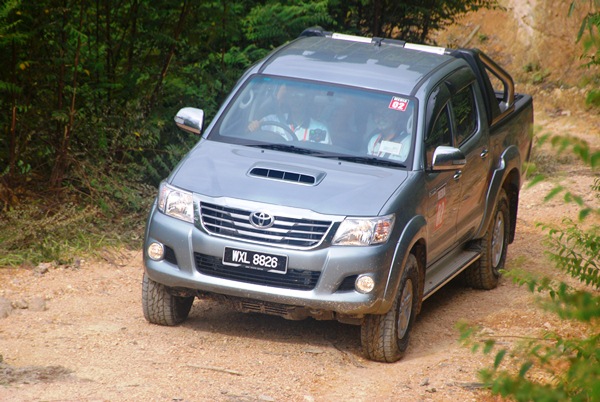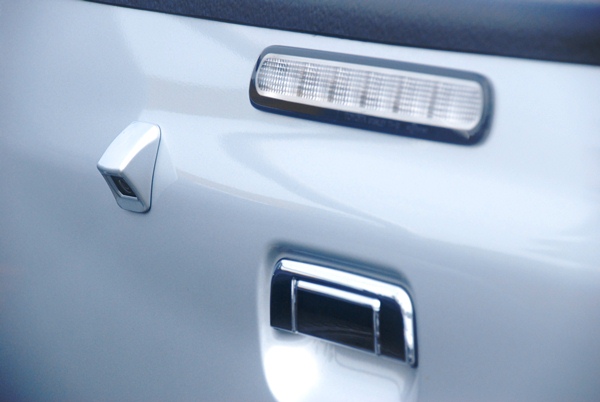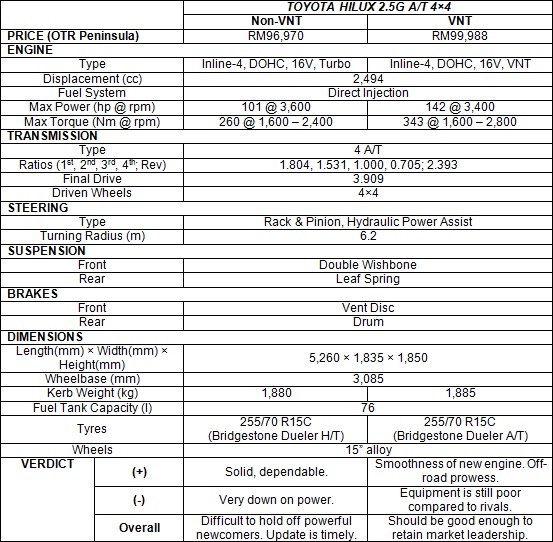Toyota Hilux 2.5 VNT launched and tested in Belum, Perak
Toyota’s line-up of predictably reliable vehicles has led to the company gaining a reputation of being slow and conservative, even if the reality is not quite the case. Truth is that Toyota listens to customers, and if nobody complains about the absence of a certain feature, there is no reason to put it in the car and add cost.
There is no such thing as a knee-jerk reaction in Toyota, but if the execs decide that there is a need for action, it is then followed up with immediacy and without hesitation. The Corolla is a good example of this. Realizing that the existing selection of powertrains can no longer cut it, Toyota did not wait till the full model change before introducing all-new engines and transmissions during the Corolla’s midlife facelift in 2010, and the result is that flagging sales figures were immediately revived.
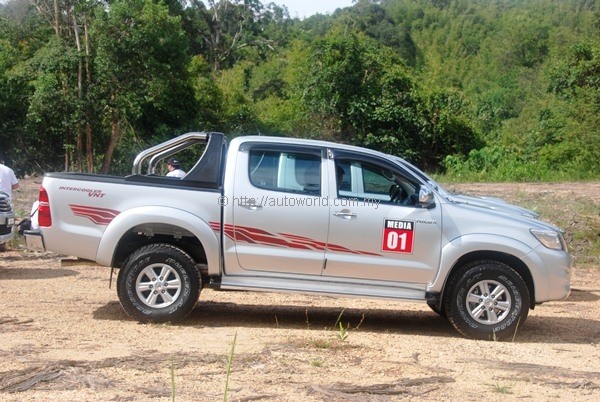 |
| Intercooler VNT livery is indicator of this being a newer and more powerful model. |
A key aspect to Toyota’s success on the sales charts, despite a lack of enthusiast appeal in its products, is its uncanny ability to just get the basics right and make continuous improvements under its kaizen philosophy. Resting on its laurels is not the Toyota way, and if the company sees that the time has come to raise its game, it just goes ahead and does so.
The current generation Toyota Hilux, for example, has sold 120,000 units in Malaysia since its launch in 2005, and it continues to top the pick-up segment’s sales charts seven years later today. Sitting rock bottom in the power stakes certainly did nothing to affect the Hilux’s dominance over bigger, flashier, and more powerful rivals. Yet, as the competition raises its game, Toyota ups its own ante, and the result is that the Hilux now comes with a more powerful 2.5-litre VNT engine with improved outputs to better cope with increasing power demands.
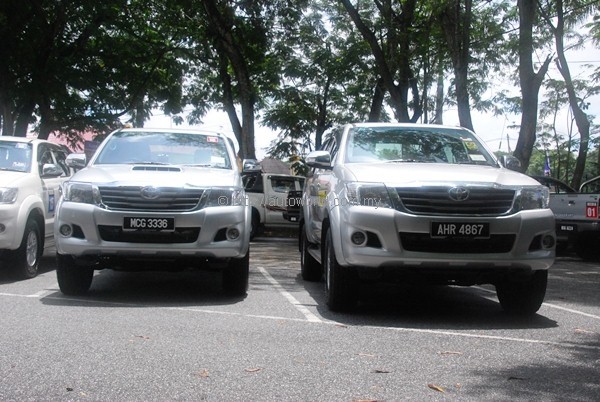 |
| VNT and non-VNT Hilux side-by-side. Older model has no bonnet scoop. |
Outputs of 142hp and 343Nm are not exactly class-leading, but they represent significant improvements over the 101hp and 260Nm that earlier owners had to make do with. The new engine completely replaces the older unit of identical capacity, and it is sold alongside the flagship 3.0G variant which continues in an unchanged state. Transmission offerings are unchanged, with choices available between a 5-speed manual and 4-speed auto.
Manual transmission is only available with the 2.5-litre engine in three variants – the single cab, the 2.5 STD, and 2.5G, priced at RM76,288, RM86,788, and RM94,988 respectively, all with insurance. Topping an extra RM5,000 on the 2.5G gets you automatic transmission, and if you prefer the range-topping 3.0G, it’s an automatic only model priced at RM107,267. Model for model, the new Hilux 2.5 VNT sees a price increase of about RM3,000 from its predecessor. All versions come with the tried and tested 4×4 system with chain-driven transfer case and Auto Disconnecting Differential. Toyota maintains a mechanical selection system between the 2H, 4H, and 4L modes citing durability as its justification.
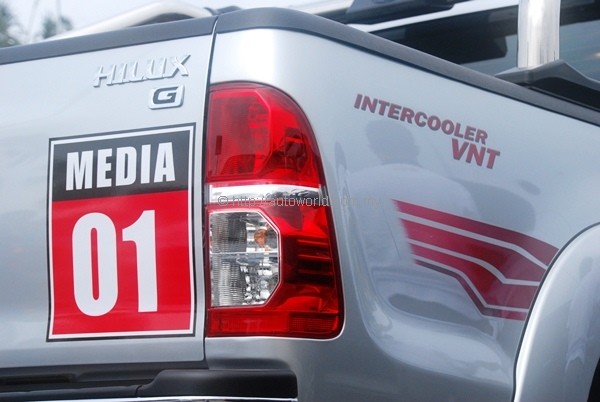 |
From the outside, a casual observer will need to look hard to differentiate the new Hilux VNT over its pre-VNT predecessor. The only visual indicators are new body stickers that spell out ‘Intercooler VNT’ on the flanks and a functional bonnet air scoop for the turbo’s intercooler. Equipment-wise, Bluetooth connectivity is now made standard feature for the 2.5G and 3.0G, a much welcomed addition. It is part of a new 2-DIN audio system that features AUX-IN, USB, iPod and MP3 compatibility. Customers can further upgrade it to a touchscreen system with GPS and reverse camera as a cost option.
Toyota’s media launch and test drive programme for the new Hilux 2.5 VNT took us to the Belum Rainforest reserve in Perak, where we even had the opportunity to drive the old and new side-by-side. The drive programme consisted of on and off-road sections, though only the VNT test cars were taken into the jungle for the off-road portion which featured steep muddy slopes to give the 4×4 system a proper work-out. All test cars of the event are the 2.5G automatic variants for both the VNT and pre-VNT models.
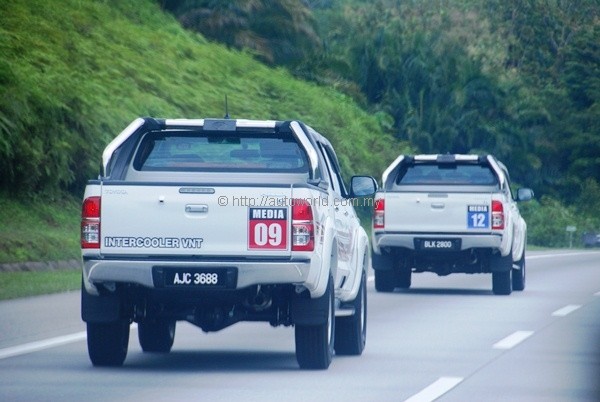 |
| Testing the old and new back-to-back gave us better illustration of the improved engine’s ability. |
Having the old and new model to drive side-by-side is a luxury that we rarely enjoy in our line of work, and in this case, the experience proved useful in helping us gauge the level of improvement from the pre-VNT to the new VNT vehicles. Improved responsiveness of the VNT engine was immediately discernible, although to be fair to the older model, the pre-VNT test car I found myself in this time felt more responsive than what I recall of an earlier test unit I drove last year. Refinement levels are not too shabby, and ride comfort is decent for the segment.
Over at the VNT test car, there remains a noticeable level of lag waiting for the turbo to spool up, but it is markedly reduced compared to the pre-VNT truck, as the engine is quicker to get into its stride when you power your way past slower traffic. Be warned, however, that even with these improved outputs, the Hilux still will not outdrag the competition. Trucks like the Nissan Navara and Mitsubishi Triton will show the Hilux a clean pair of heels, but its added firepower means that a loss of momentum is now less costly as less effort is needed to regain lost speed.
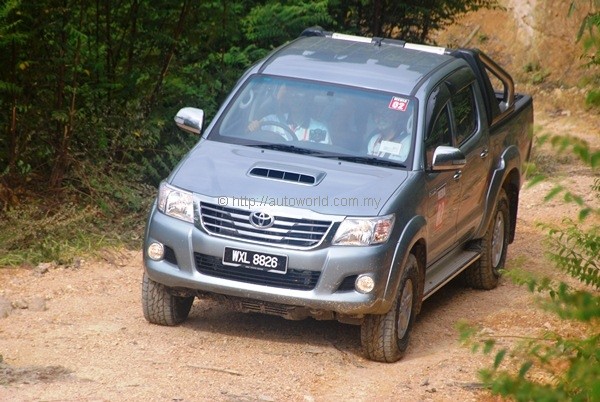 |
| The tough Hilux acquits itself very well off-road. |
Cynics will laugh at Toyota’s insistence on offering a 4-speed auto box for the Hilux, especially when the competition is moving on to 5- and 6-speed gearboxes, but Toyota’s selection of ratios are sufficiently well spread for a good combination of responsiveness and fuel economy – in fourth gear, 100kph was in the region of 2,500rpm. As they say sometimes, it is not the number of ratios you have, but what you make of them, and in the Hilux’s case, Toyota picked its four ratios wisely.
Specifically for this event, Toyota has shodded the VNT test cars with tougher all-terrain tyres to better cope with the treacherous off-road drive section. The result is a slightly choppier ride on the road, although it turned out to be remarkably pliant off it. The Hilux scored pretty high marks on the off-road course, tackling obstacles and slippery slopes without any fuss. In such situations, one appreciates the Hilux’s overall mechanical simplicity and durability.
Toyota’s improvements to the Hilux has not made it a class-leading product in terms of specifications, but that has never deterred anyone from putting their money down on the big ‘T’ in the past. What Toyota has done with the Hilux VNT is to simply narrow the power gap with its rivals to a margin where the Toyota badge, together with the strong after sales and resale value that comes with it, can make up the difference. Well played, Toyota.
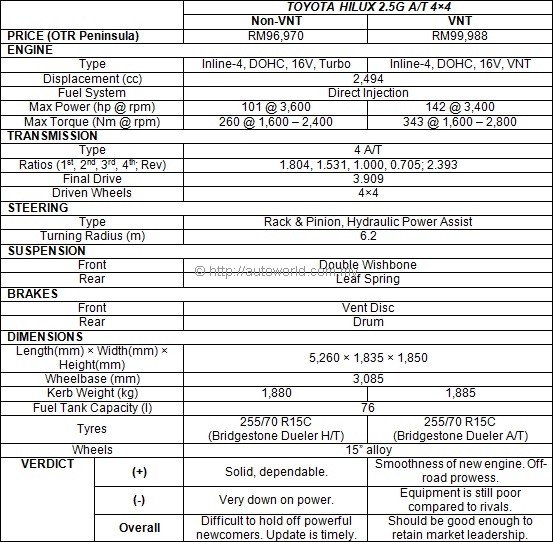 |





